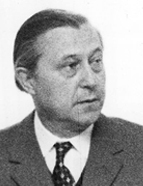

Following his research, Kellenbenz published his work entitled Unternehmerkräfte im Hamburger Portugal- und Spanienhandel 1590-1625 [Entrepreneurial forces in the Spanish-Hamburg and Portuguese-Hamburg trade from 1590 to 1625]. This work reflects the greater attention that Kellenbenz paid to the actions of individuals in society, a vision that was the starting point for his historical analyses. Thus, while this line was visible in his historiographical production, he rejected the historiographical current that was beginning to give greater importance to society from a global perspective. He thus rejected a pure structural historiography and continued with the Germanic tradition of producing and writing history based on sources and individualism throughout history (Leopold von Ranke). From this perspective, his attitude can be seen as a countercurrent to German historiography in the post-World War II era, which was beginning to give a greater importance to social history. Against Kellenbenz's matrix, historians such as Hans-Ulrich Wehler (1913-2014) felt that he was a "frozen traditionalist who stuck with an outdated and old-fashioned historicism". Since Kellenbenz himself never spoke about his vision of history, nor did he teach a single specific current throughout his professional career, it seems impossible to determine and characterise his works within a specific German national or international matrix. He himself became interested in learning about and following theoretical and historiographical developments. Summarising his wide-ranging historiographical output, it can be said that in most of his works, Kellenbenz used historical individualism, directing his interest towards the study of ethnic and social groups (most of which were international merchants) and their action and importance at an international level—from the Middle Ages to the modern era and including minorities—using prosopographical methods.
This work is financed by national funds through FCT - Foundation for Science and Technology, I.P, in the scope of the projects UIDB/04311/2020 and UIDP/04311/2020.
